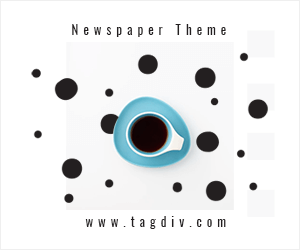When done correctly, Running Facebook ads can be an effective strategy for building brand awareness, driving website traffic, and increasing conversions. However, even well-intentioned campaigns can struggle to perform. Marketers often face poor click-through rates, high costs per conversion, or stagnant audience engagement. Understanding the underlying causes behind these roadblocks is key to optimizing performance and maximizing your ad spend.
Some of the most common Facebook ad mistakes include targeting an audience that is too broad or too narrow, using low-quality or irrelevant creatives, and failing to test different ad variations. Additionally, neglecting to monitor campaign metrics regularly, writing unclear or unengaging ad copy, and relying on outdated audience data can all contribute to underwhelming results. These missteps often compound over time, leading to frustration and wasted budget. To move forward, advertisers need to take a closer look at their strategy—adjusting audience segmentation, refining messaging, and continuously testing and learning from campaign performance. Identifying these issues early on can help avoid bigger problems and create a more sustainable, practical advertising approach.
High Ad Costs
As the popularity of Facebook advertising soars, competition for ad space drives costs higher, sometimes making it difficult for businesses to achieve sustainable ROI. In recent years, the constant influx of new advertisers and the rising demand for premium ad placements have significantly increased the average cost-per-click (CPC) and cost-per-thousand-impressions (CPM). Rather than scaling back, marketers can take a proactive approach by tightening audience targeting, using Facebook’s advanced segmentation features to focus on those with the highest conversion potential, such as lookalike or custom audiences based on customer data. Strategies like excluding low-performing demographics and utilizing retargeting can also help you stretch your budget further. Regular A/B testing of creatives, headlines, and calls to action can refine results and reduce budget waste by identifying what truly resonates with your audience. Scheduling ads for peak engagement windows can also minimize unnecessary spending and extend your campaigns’ reach, ensuring you make the most of every advertising dollar invested in the platform.
Low Engagement Rates
Low engagement—measured by likes, shares, comments, and interactions—can signal that your audience isn’t resonating with your ads or that the content format is not suited to the platform. Engagement is critical, as higher interaction rates often correlate with improved ad relevancy scores and lower costs over time. To combat this, prioritize crisp, high-quality visuals and incorporate eye-catching formats like video and carousels that stop viewers mid-scroll. Writing concise, compelling copy that directly addresses your audience’s motivations will foster stronger reactions and encourage users to take action. Experiment with interactive ad options like polls or quizzes to boost two-way engagement and increase organic reach. These features drive participation and provide valuable feedback about your audience’s preferences.
Another important factor in improving engagement is the timing and frequency of your ads. Posting too frequently can lead to ad fatigue, while inconsistent posting may reduce visibility. Test different times of day and days of the week to identify patterns in audience responsiveness. Additionally, ensure your messaging is aligned with the specific stage of the buyer’s journey. Ads that push for conversions too early—before building trust or providing value—often fail to connect. Tailoring content to inform, entertain, or solve problems can establish relevance and prompt more interaction. Finally, always review audience targeting to confirm that your ads are being served to people most likely to find them meaningful. When relevance and creativity align, engagement often follows.
Ad Fatigue
Ad fatigue occurs when your target audience sees the same creative or offer too frequently, resulting in dwindling performance and higher costs per result. This phenomenon typically manifests as a decline in engagement, click-through rates, and overall campaign effectiveness. To stave this off, rotate ad creatives and deploy new messages regularly. Fresh imagery, updated copy, and new offers can reignite user interest and prevent negative associations with your brand. Expanding your target audience through custom or lookalike segments can introduce your ads to fresh eyes and reduce frequency across core segments. Take advantage of Facebook’s frequency capping tools to limit how often each individual sees your ads, ensuring they stay relevant and practical throughout the campaign. Tracking frequency metrics and monitoring user feedback will help you detect the early signs of ad fatigue and make timely adjustments before your campaign results decline.
Poor Conversion Rates
One of advertisers’ most frustrating issues is driving substantial traffic, only to see limited conversions. Even with high impressions and click-through rates, it’s common for campaigns to underperform on conversions due to weak alignment between ads and landing pages. To address this, start by aligning the messaging and offers in your ad with the content and call to action on your landing page—cohesion is key for user trust. Avoid disconnects that might confuse or disappoint visitors when they arrive on your site. Enhance the user experience by fast-loading, mobile-friendly landing pages and making your offers easy to access and understand. Page speed, ease of navigation, and prominent calls to action can all have a measurable impact on conversion rates. Retargeting campaigns can effectively bring back interested users who previously visited your site but did not convert, increasing opportunities for closing the sale and maximizing your ad spend. Implementing conversion tracking and A/B tests on your landing pages will provide critical data to refine and improve your funnel continually.
Ad Rejections and Compliance Issues
Facebook maintains strict guidelines regarding ad content, format, and compliance, and violations can result in rejections or account suspensions. Rules around prohibited content, misleading claims, and sensitive categories are enforced by both algorithms and manual reviews, posing a constant challenge for advertisers exploring creative messaging. Marketers must frequently review and understand Facebook’s ad policies and stay updated as these rules evolve. Leverage the ad review tool for pre-approval checks before launching new ads, minimizing the risk of rejection and campaign delays. Should you encounter an incorrect rejection, be proactive in utilizing Facebook’s established appeal and review processes so your campaigns can return to serving your audience as quickly as possible. Maintain meticulous documentation of your ad assets to support your appeals with evidence, and consider scheduling periodic audits to review ongoing compliance efforts.
Privacy Concerns and Data Regulations
Data privacy regulations such as GDPR and CCPA have changed how marketers collect and use data on Facebook and similar platforms. These laws impose stricter rules on how user data is gathered, stored, and processed, adding complexity to audience targeting and campaign tracking. Adhering to transparent data practices—such as obtaining explicit user consent—builds user trust and legal protection, enabling brands to maintain positive relationships with their audiences. In the current landscape, prioritizing the use of first-party data allows you to maintain effective targeting while remaining compliant with evolving privacy standards. Update privacy policies, ensure precise opt-in mechanisms, and educate your team on new requirements. Adapting to these regulations ensures your campaigns are sustainable and resilient to legal shifts, helping your business avoid costly fines and reputational damage.
Evolving Consumer Preferences
Rapid shifts in social media behavior and content consumption require marketers to adapt their creative and strategic approaches consistently. Algorithms prioritize different kinds of content over time, and audience expectations for personalization, transparency, and brand authenticity continue to increase. Monitoring trends like the surge in short-form video, ephemeral stories, or augmented reality experiences can provide an edge over competitors who are slow to adapt. Adjusting your strategy to deliver personalized, multimedia content keeps your brand relevant and engaging as consumer preferences evolve, and signals that your team is attentive to what audiences value most. Test, analyze, and refine your approach to ensure your message resonates in a crowded social landscape, helping your campaigns stay ahead of platform changes and market shifts.
Managing Rising Advertising Costs
With increasing competition, the costs for high-visibility ad placements continue to rise, often squeezing the margins for smaller businesses or new advertisers. Strategic campaign planning and diligent optimization are essential—this involves regularly reviewing bid strategies, using automated budget optimization features, and identifying high-performing audience segments. Use strong analytics to refine targeting and ad placements, ensuring you get the best possible return for your budget. Broaden your marketing mix by exploring other digital advertising platforms, such as Instagram, Google Ads, or emerging social channels, to avoid over-reliance on Facebook alone. Testing and learning from performance data across channels can protect your results against future changes in the advertising environment, revealing new sources of growth and brand awareness.
By routinely assessing your campaigns for these common challenges and addressing each with informed, strategic solutions, you can boost the effectiveness and profitability of your Facebook advertising. Staying up-to-date with industry trends, evolving regulations, and continuously optimizing your approach will position your brand for long-term success in Facebook advertising. Consistent learning and adaptation are key to reducing noise in a competitive digital landscape.





